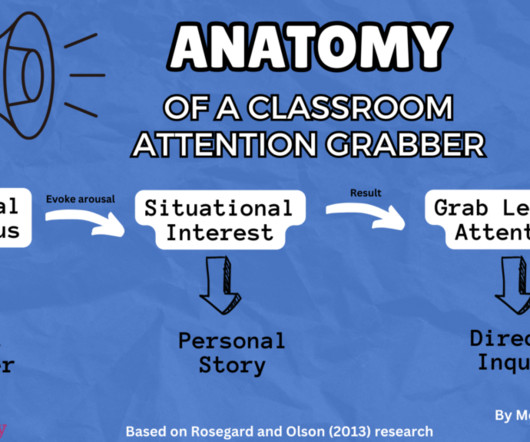30 Effective Classroom Attention Getters with Examples
Educational Technology and Mobile Learning
DECEMBER 29, 2023
For instance, Wallace, Vodanovich, and Restino (2003) discussed how boredom correlates with attention deficit and memory lapses, signaling a deeper issue than mere disinterest. 2004; Deci, 1992; Renninger et al., This approach appeals to different learning styles and keeps students engaged (Mayer, 2003). Hidi, & A.



















Let's personalize your content